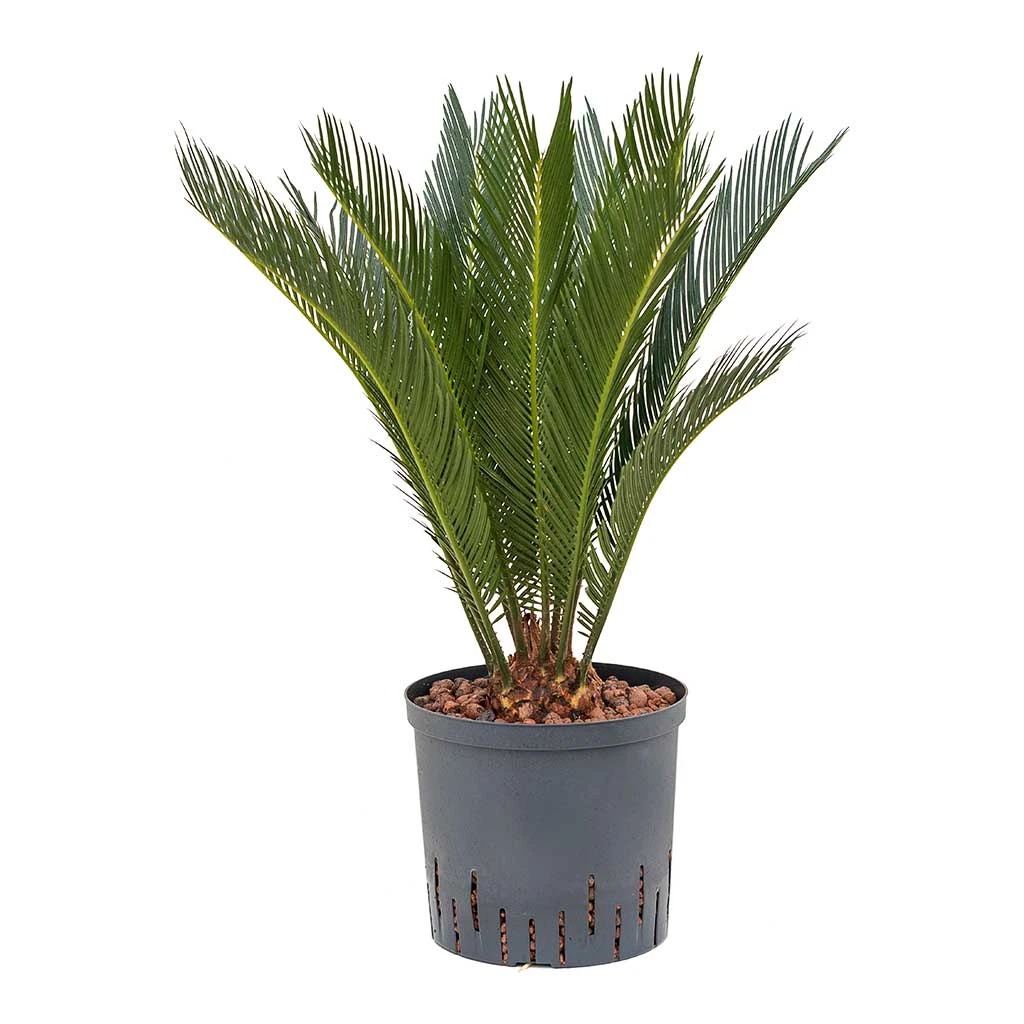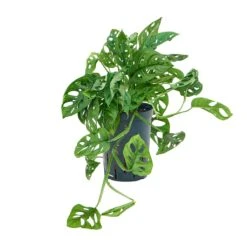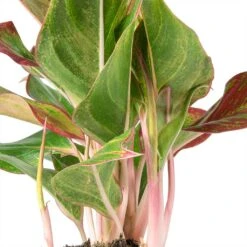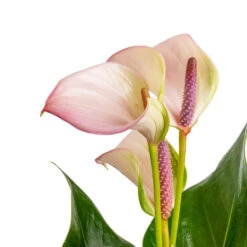Cycas Revoluta – HydroCare
$74.99 Original price was: $74.99.$52.49Current price is: $52.49.
- Shop with ease, buy with confidence.
- Free Shipping, Quality Goods
- High quality products, low prices.
- Quality You Can Count On

The HydroCare version of Cycas revoluta is not a palm at all despite appearances and its common name of Sago Palm. It is actually a Cycad and dates back to pre-historic time. However, just like a palm it is known for its attractive feathery fronds.
The trunk of the Cycas is known as a caudex. Stiff, shiny fronds grow in a rosette from the trunk, initially in an upright manner before arching gracefully as they age. New leaves emerge all at once rather than developing continuously. This periodic flush of new growth is known as a ‘break’. New leaves are fragile, so avoid disturbing the plant at this time. However, if the leaves start to lean towards a source of light, turn the plant slightly each day until they harden.
Cycas revoluta is a majestic option for a house or office plant and will provide an ancient and exotic focal point.
HydroCare – Cycas revoluta – Sago Palm Care & Info Guide
Horty Hints
Feeling hot, hot, hot! The Cycas revoluta in one of the palms that can handle some direct sunlight. Providing full early morning and late afternoon sun will increase growth rate.
Dust from time-to-time and remove any dead leaves, cutting close to the trunk. The fronds are delicate and slow to grow, so handle carefully to avoid damage.
Some spray a day will keep yellow away! No one is a fan of yellow leaves, and this palm like many others likes lots of humidity. Moving to a high humid environment or using an atomiser will keep the yellowing at bay.

Light
Cycas revoluta prefers bright, indirect light but will tolerate shade. Direct early morning or late afternoon sunlight should not harm the plant, providing it is not too harsh.

Watering
Keep an eye on the water meter. Water when the meter has been on minimum for 10 to 14 days. Take a look at our HydroCare set up guide for more information.

Temperature
The Sago Palm does well in average household temperatures (16-24°C), but should not be allowed to go lower than 13°C. Avoid cold draughts.

Humidity
Sago Palms prefer increased humidity levels. Mist regularly or leave in a steamy bathroom for an hour to give it a boost. If it rains in the summer, take it outside to soak up some extra moisture.

Feed
Add a Hydroculture liquid feed every 2 to 3 waterings during the spring and summer months.

Height & Growth Rate
The Sago Palm is a slow growing plant with a maximum indoor height of around 60cm to 80cm.

Toxicity
The leaves of the revoluta are toxic if eaten. Keep out of reach of children and animals.

Origin
Cycas revoluta is native to tropical Asia.
| SIZE: Hydro Pot Size x Total Height | 22/19 x 65cm |
|---|
Be the first to review “Cycas Revoluta – HydroCare” Cancel reply
Related products
HOUSEPLANTS
HOUSEPLANT STYLES
HOUSEPLANTS
HOUSEPLANTS
HOUSEPLANT STYLES
HOUSEPLANTS























Reviews
There are no reviews yet.